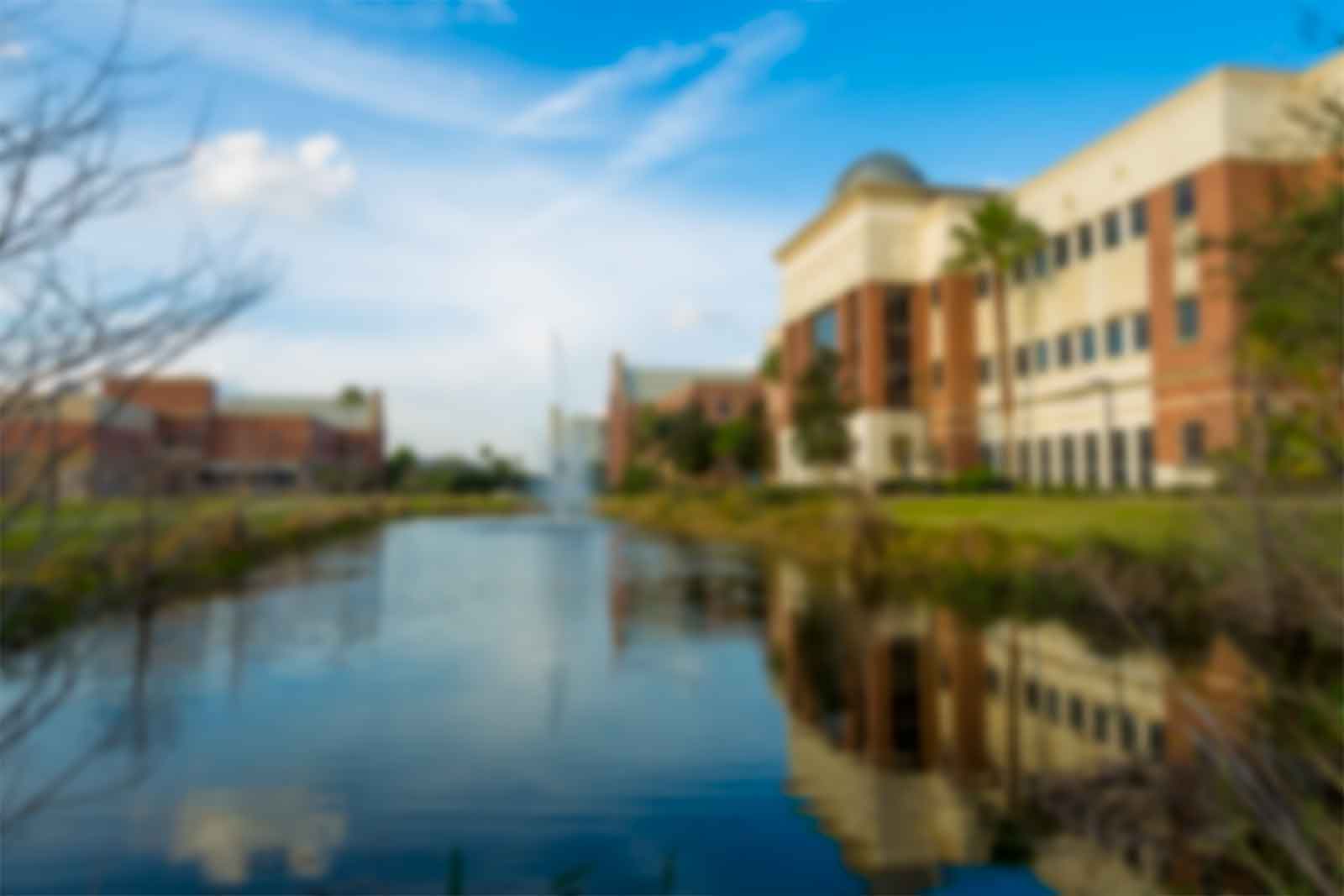Dr. Angela Rozas-Davila
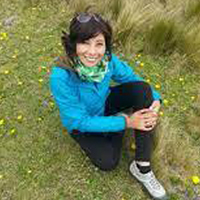
Research Interests:
Earned her Bachelor degree in Biology from Universidad Nacional de San Antonio Abad del Cusco-Peru where her developed skills in plant taxonomy and palynology. Joined the Paleolab at Florida Institute of Technology in 2011 and was awarded her Master’s degree in 2013. Her research was focused on the Pleistocene megafaunal extinctions and the ecological consequences of their demise in southern Peru.
Earned her PhD degree researching the functional extinction of Pleistocene Megafauna in the High Andes. Her study covered the Late Pleistocene and Middle Holocene between 8,000 and 40,000 years BP. To achieve her goals, She reconstructed the paleo-environments of 5 sites using pollen, diatoms, and charcoal particles as proxies for vegetation assemblages, changes in water level, and fire respectively. She used Sporormiella spores as a proxy for megafaunal presence. Her research can be applied in modern conservation to prevent ecological cascades and further species extinction.
Publications:
Rozas-Davila, A., D. Rodbell, and M. B. Bush. 2023. Pleistocene megafaunal extinction in the grasslands of Junin-Peru. Quaternary Research 50:755-766.
Bush, M. B., A. Rozas-Davila, M. Raczka, M. Nascimento, B. Valencia, R. K. Sales, C. N. H. McMichael, and W. D. Gosling. 2022. A paleoecological perspective on the transformation of the tropical Andes by early human activity. Philosophical Transactions of the Royal Society of London. B, Biological Sciences 377::20200497.
Rozas-Davila, A., A. Correa-Metrio, C. N. McMichael, and M. B. Bush. 2021. When the grass wasn't greener: Megafaunal ecology and paleodroughts. Quaternary Science Reviews 266:107073.
Rozas-Davila. 2020. An investigation of megafaunal ecology and extinction in the Neotropics. Florida Institute of Technology, Melbourne, Florida.
Rozas-Davila, A., B. G. Valencia, and M. B. Bush. 2016. The functional extinction of Andean megafauna. Ecology 97:2533-2539.
Dr. Christine Åkkesson
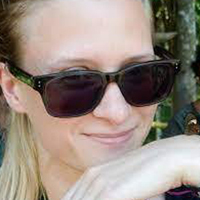
Research Interests:
Received her Bachelor’s degree in Geology in 2011 and her Master’s degree in Quaternary Geology in 2013 at Lund University, Sweden. She came to the Florida Institute of Technology in 2014, to work on her Ph.D. in Amazonian paleoecology. Her research focused on climate changes, vegetation changes, and the frequency of droughts and megadroughts in the Amazon during the last 5000 years. She worked on two lowland Ecuadorian lakes and one montane lake from northern Peru finding evidence of ecological legacy effects on landscape.
Publications:
Åkesson, C. M., C. N. McMichael, S. León-Yánez, and M. B. Bush. 2023. Late-Holocene maize cultivation, fire, and forest change at Lake Ayauchi, Amazonian Ecuador. The Holocene:09596836231151833.
Åkesson, C., M., C. N. H. McMichael, M. F. Raczka, S. N. Huisman, M. Palmeira, J. Vogel, D. Neill, J. Veizaj, and M. B. Bush. 2021. Long-term ecological legacies in western Amazonia. Journal of Ecology 1:432-446.
Bush, M. B., M. N. Nascimento, C. M. Åkesson, G. M. Cárdenes-Sandí, S. Y. Maezumi, H. Behling, A. Correa-Metrio, W. Church, S. N. Huisman, T. Kelly, F. E. Mayle, and C. N. H. McMichael. 2021. Widespread reforestation before European influence on Amazonia. Science 372:484-487.
Åkesson, C. M., F. Matthews-Bird, M. Bitting, C. J. Fennell, W. B. Church, L. C. Peterson, B. G. Valencia, and M. B. Bush. 2020. 2100 years of human adaption to climate change in the High Andes. Nature Ecology and Evolution 4:66–74.
Åkesson, C. 2019. Humans, vegetation and drought in Late-Holocene Amazonia. PhD Dissertation, Florida Institute of Technology, Melbourne, Florida.
Gums, B. L., H. Cyr, K. D. Hollenbach, M. Bush, C. Åkesson, C. McMichael, M. Nascimento, and G. A. Waselkov. 2018. Life at the River’s Edge.
2015 Åkesson, C., Nielsen, A. B., Broström, A., Persson, T., Gaillard, M.J., and Berglund, B. E., 2015. From landscape description to quantification: A new generation of reconstructions provides new perspectives on Holocene regional landscapes of SE Sweden. The Holocene, 25.1, 178-193.
2014 Nielsen, A. B., Poska, A., Åkesson, C., and Broström, A., 2014. Holocene land cover changes and their effect on carbon dynamics in south-eastern Sweden. LUCCI annual report 2013/2014. Lund, Sweden, 26-29.
Dr. Courtney Shadik
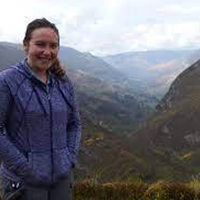
Research Interests:
I first joined the Paleolab while pursuing my undergraduate degree from Florida Tech in 2012. As an undergraduate, I was trained in diatom identification, reconstructing past limnological conditions, and macrocharcoal analysis, reconstructing past fire regimes. This training was applied to my undergraduate research tracing lake level fluctuations and climatic conditions during the last interglacial-glacial transition in Panama (See Shadik et al, 2017). The experience I gained as an undergraduate inspired me to continue paleoecological research as a graduate student. I graduated in May of 2015 from Florida Institute of Technology with a Bachelors degree in Marine Biology, and I began as a PhD student in the Paleolab in Fall 2015.
My research shifted geographically from Panama to the Peruvian and Ecuadorean Andes, as well as temporally from glacial-interglacial transitions, to the Holocene. As a PhD. Candidate, I investigated the influence of Mid-Holocene climate on the rise of Andean camelid pastoralism. My study area stretched from Ecuador, down to southern Peru. I developed expertise in GIS and ecological modeling.
Publications:
Bush, M. B., Correa‐Metrio, A., Van Woesik, R., Shadik, C. R., & McMichael, C. N. (2017). Human disturbance amplifies Amazonian El Niño–southern Oscillation signal. Global change biology, 23(8), 3181-3192.
Shadik, C. R., Cárdenes-Sandí, G. M., Correa-Metrio, A., Edwards, R. L., Min, A., & Bush, M. B. (2017). Glacial and interglacials in the Neotropics: a 130,000-year diatom record from central Panama. Journal of Paleolimnology, 58(4), 497-510.
Bush, M. B., Correa-Metrio, A., McMichael, C. H., Sully, S., Shadik, C. R., Valencia, B. G., ... & Overpeck, J. T. (2016). A 6900-year history of landscape modification by humans in lowland Amazonia. Quaternary Science Reviews, 141, 52-64.
Shadik, C.R., Cárdenes-Sandí, G. M, Bush, M. B. 2016. Fossil diatoms and lake level: A 130,000-year record from Central Panama. Ecological Society of America. Ft. Lauderdale, FL.
Dr. Bryan Valencia
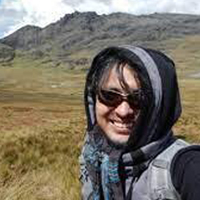
Research Project:
Shifting baselines: reconstructing vegetation assemblages in absence of human influences that can be taken as baselines for conservation
Treeline dynamics: Polylepis woodland dynamics, fire, and the history of speciation in the High Andes
Identification of microrefugia
Pollen identification: Identification of cultivated species using SEM (scanning electron microscope) images.
Research Interests:
My research interests are understanding palaeoclimate and the mechanisms that controlled past climate variability in the South American Andes from centennial to millennial timescales. My goal is to use palaeoecological reconstructions to provide a useful framework that can be applied in conservation, restoration and management in face of contemporary climate change.
Publications:
Bush, M. B., A. Rozas-Davila, M. Raczka, M. Nascimento, B. Valencia, R. K. Sales, C. N. H. McMichael, and W. D. Gosling. 2022. A paleoecological perspective on the transformation of the tropical Andes by early human activity. Philosophical Transactions of the Royal Society of London. B, Biological Sciences 377::20200497.
Åkesson, C. M., F. Matthews-Bird, M. Bitting, C. J. Fennell, W. B. Church, L. C. Peterson, B. G. Valencia, and M. B. Bush. 2020. 2100 years of human adaption to climate change in the High Andes. Nature Ecology and Evolution 4:66–74.
Nascimento, M., N., A. G. Laurenzi, B. G. Valencia, R. Van, and M. Bush. 2019. A 12,700-year history of paleolimnological change from an Andean microrefugium. The Holocene 29:231–243.
Raczka, M. F., N. A. Mosblech, L. Giosan, A. M. Folcik, B. G. Valencia, M. Kingston, S. Baskin, and M. B. Bush. 2019. A human role in Andean megafaunal extinction? Quaternary Science Reviews 205:154-165.
Valencia, B. G., M. B. Bush, A. L. Coe, E. Orren, and W. D. Gosling. 2018. Polylepis woodland dynamics during the last 20,000 years. Journal of Biogeography 45:1019-1030.Valencia BG, Matthews-Bird F, Urrego DH, Williams JJ, Gosling WD, Bush M. Andean microrefugia: testing the Holocene to predict the Anthropocene (2016). New Phytologist Jul 4. doi: 10.1111/nph.14042
Holden, P. B., H. J. B. Birks, S. J. Brooks, M. B. Bush, G. M. Hwang, F. Matthews-Bird, B. G. Valencia, and R. van Woesik. 2017. BUMPER v1.0: A Bayesian user-friendly model for palaeo-environmental reconstruction. Geoscientific Model Development 10:483-498.
Matthews-Bird, F., B. Valencia, W. Church, L. Peterson, and M. B. Bush. 2017. A 2000-year history of disturbance and recovery at a sacred site in Peru’s northeastern cloud forest. The Holocene 27:1707-1719.
Angela Rozas-Dávila, Bryan G. Valencia, Mark B. Bush. The functional extinction of Andean megafauna (2016). Ecology. DOI: 10.1002/ecy.1531
Dunia H. Urrego, Henry Hooghiemstra, Oscar Rama-Corredor, Belen Martrat, Joan O. Grimalt, Lonnie Thompson, Mark B. Bush, Zaire González-Carranza, Jennifer Hanselman, Bryan Valencia, and César Velásquez-Ruiz. Millennial-scale vegetation changes in the tropical Andes using ecological grouping and ordination methods (2016). Climate of the Past, 12, 697–711, doi:10.5194/cp-12-697-2016
Mark B. Bush, Andrea M Alfonso-Reynolds, Dunia H Urrego, Bryan G. Valencia, Alexander Correa-Metrio, Michael Zimmermann, and Miles R Silman. 2015. “Fire and Climate : Contrasting Pressures on Tropical Andean Timberline Species,” 1–13. Journal of Biogeography, doi:10.1111/jbi.12470
Nicole A Sublette Mosblech, Alex Chepstow-Lusty, Bryan G. Valencia and Mark B Bush. (2012) Anthropogenic control of late-Holocene landscapes in the Cuzco region, Peru. The Holocene, DOI: 10.1177/0959683612449760
Valencia, B.G., Urrego, D.H., Silman, M.R. & Bush, M.B. (2010) From ice age to modern: a record of landscape change in an Andean cloud forest. Journal of Biogeography, 37, 1637-1647.
Gosling, William D.; Hanselman, Jennifer A.; Knox, Christoper; Valencia, Bryan G. and Bush, Mark B. (2009). Long term drivers of change in Polylepis woodland distribution in the central Andes. Journal of Vegetation Science, 20(6), pp. 1041–1052.
Urrego, D.H., Bush, M., Silman, M.R., Correa-Metrio*, A., Ledru, M.-P., Mayle, F.E. Paduano, G. & Valencia*, B.G. 2009. Millennial-Scale Ecological Changes in Tropical South America since the last glacial maximum. in F. Vimeux, F. Sylvestre, and M. Khodri, editors. Past climate variability from the Last Glacial Maximum to the Holocene in South America and surrounding regions. Springer.
Hillyer, R., Valencia, B. G. , Bush, M.B., Silman, M.R. and M. Steinitz-Kannan. 2009. A 24,700-year paleolimnological history from the Peruvian Andes. Quaternary Research 71: 71-82.
Gosling, W.D.; Urrego, D.H.; Hanselman, J.A.; Valencia, B.G.; Bush, M.B. & Silman, M.R. 2006. How typical are the last 20,000 years of climatic and vegetation change in the tropical Andes?. Eos Trans. AGU 87(52), Fall Meeti. Suppl. San Francisco, CA, USA.
Dr. Jacob Schiferl
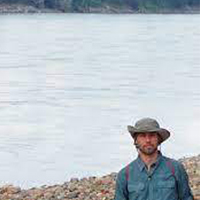
Research Interests:
I am an alumnus of the University of Maryland where I obtained my Bachelors of Science in Environmental Science and Policy with a focus in Biodiversity and Conservation Biology. I completed my Master’s of Science in Ecology at The Florida Institute of Technology (FIT) in 2015. My thesis work included paleoecology where I looked at how historical vegetation assemblages have responded to climate change through time in an attempt to better understand vegetation response to current climate change conditions.
My Thesis was entitled A Paleoecological Analysis of Lake Palotoa, Peru and the aim of my research was to reconstruct the history of the vegetation around Lake Palotoa for the past 3700 years. My PhD was a palynological study of a long sediment record from Lake Junin, Peru. I produced pollen, spore and charcoal records for the last five interglacials.
Publications:
Schiferl, J. D., M. B. Bush, M. R. Silman, and D. H. Urrego. 2018. Vegetation responses to late Holocene climate changes in an Andean forest. Quaternary Research 89:60-74.
Dr. Majoi De Novaes Nascimento
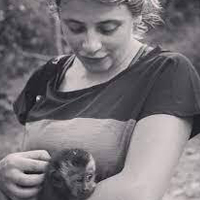
I am a Postdoctoral researcher at Florida Institute of Technology and my main research interest is to investigate the response of tropical ecosystems to different forcings over time. On my Ph.D. at Florida Institute of Technology my primary objective was to understand how Andean and Amazonian ecosystems changed in response to the Holocene droughts and to the increase in the use of plant cultivation and animal domestication by humans in South America. To evaluate such dynamics, I used diatom, pollen, Sporormiella, charcoal, loss-on-ignition and X-ray fluorescence (XRF) analysis as proxies to past changes in the landscapes. My study takes place in the Amazon basin and Andean Altiplano and includes the lakes Pata in the Brazilian lowlands, Lake Llaviucu in the Ecuatorian middle elevation forest, and Lake Miski in the Peruvian altiplano. As a Ph.D. student I was successful on the acquisition of the National Geographic Society Waitt Grant, which paid for an expedition to the Hill of Six Lakes, in the Brazilian Amazon basin. As the leader of this expedition, I worked for two years to obtain the permits from the Brazilian government and local indigenous communities to work on their territories. During this campaign, I raised cores from lakes that had never been previously visited by scientists. Besides Hill of Six Lakes, I participated in field campaigns in different tropical high and lowland regions (Brazil, Peru, Ecuador).
I got my Bachelors in Biological sciences and education from Universidade Guarulhos, SP, Brazil in 2006. In 2012 I completed my master's degree at Sao Paulo Botanical Institute, using water chemistry and diatom ecology to identify sources of organic pollution in a the biggest water supply system in the state of São Paulo, Brazil. In 2019 I completed my Ph.D at Florida Institute of Technology.
Publications:
Blaus, A., M. B. Bush, M. Raczka, M. Nascimento, and C. N. H. McMichael. In Press. Amazonian pollen assemblages reflect biogeographic gradients and forest cover. Journal of Biogeography.
Nascimento, M. N., B. M. Heijink, M. B. Bush, W. D. Gosling, and C. N. McMichael. 2022. Early to mid-Holocene human activity exerted gradual influences on Amazonian forest vegetation. Philosophical Transactions of the Royal Society B 377:20200498.
Benito, X., M. Luethje, T. Schneider, S. C. Fritz, P. A. Baker, E. J. Pedersen, P. Gaüzère, M. de Novaes Nascimento, M. Bush, and A. Ruhi. 2022. Ecological resilience in tropical Andean lakes: A paleolimnological perspective. Limnology and Oceanography 67:S23-S37.
Bush, M. B., A. Rozas-Davila, M. Raczka, M. Nascimento, B. Valencia, R. K. Sales, C. N. H. McMichael, and W. D. Gosling. 2022. A paleoecological perspective on the transformation of the tropical Andes by early human activity. Philosophical Transactions of the Royal Society of London. B, Biological Sciences 377::20200497.
Benito, X., M. Luethje, T. Schneider, S. C. Fritz, P. A. Baker, E. J. Pedersen, P. Gaüzère, M. de Novaes Nascimento, M. Bush, and A. Ruhi. 2021. Ecological resilience in tropical Andean lakes: A paleolimnological perspective. Limnology and Oceanography.
Bush, M. B., M. N. Nascimento, C. M. Åkesson, G. M. Cárdenes-Sandí, S. Y. Maezumi, H. Behling, A. Correa-Metrio, W. Church, S. N. Huisman, T. Kelly, F. E. Mayle, and C. N. H. McMichael. 2021. Widespread reforestation before European influence on Amazonia. Science 372:484-487.
Gosling, W. D., M. N. Nascimento, S. Y. Maezumi, M. B. Bush, and C. N. H. McMichael. 2021. Scarce fire activity in north and north-western Amazonian forests during the last 10,000 years. Plant Ecology & Diversity https://doi.org/10.1080/17550874.2021.2008040.
Nascimento, M. d. N., M. Bush, and D. d. C. Bicudo. 2021a. Water quality and spatial and seasonal dynamics in the largest water supply reservoir in Brazil and implications for diatom assemblages. Acta Limnologica Brasiliensia 33.
Nascimento, M. N., G. Peters-Schulze, G. S. Martins, R. C. Cordeiro, B. Turcq, L. S. Moreira, and M. B. Bush. 2021b. Limnological response to climatic changes in western Amazonia over the last millennium. Frontiers of Biogeography.
NASCIMENTO M. N., Mosblech N. A. S., Raczka M. F., Baskin S., Manrique K. E, Wilger J., Giosan L., Benito X., Bush M. B. 2020. The adoption of agropastoralism and increased ENSO frequency in the Andes. Quaternary Sciences Reviews. DOI: https://doi.org/10.1016/j.quascirev.2020.106471.
NASCIMENTO M. N., Martins G. S. Cordeiro, R. C., Bush M. B. 2019 Vegetation response to climatic changes in western Amazonia over the last 7,600 years. Journal of Biogeography. 00:1–18. DOI: h t t p s : //d o i .org/10.1111/jbi.13704.
Alessandri L., Achino K. F., Attema P. A. J., NASCIMENTO M. N., Gatta M., Rolfo M. F., Sevink J., Sottili G., van Gorp W. 2019. Salt or fish (or salted fish)? The Bronze Age specialised sites along the Tyrrhenian coast of Central Italy: New insights from Caprolace settlement. PLoS ONE 14(11): e0224435. DOI: https://doi.org/10.1371/journal.pone.0224435.
NASCIMENTO M. N., Laurenzi, A. G., Valencia, B. G, Van, R. and Bush, M. B. 2018. A 12,700-year history of limnological change from an Andean microrefugium. The Holocene. DOI: https://doi.org/10.1177/0959683618810400.
Zorzal-Almeida S., Salim A., Andrade M. R. M., NASCIMENTO, M. N., Bini, L. M., Bicudo, D. C. 2018. Effects of land use and spatial processes in water and surface sediment of tropical reservoirs at local and regional scales. Science of The Total Environment, 644: 237-246. DOI: https://doi.org/10.1016/j.scitotenv.2018.06.361.
Gums B. L., Cyr, H., Hollenbach, K. D., Bush, M. B., Akesson, C, McMichael, C. NASCIMENTO, M. N., Waselko, G. A. 2018. Life at the River's Edge: Phase III Archaeological Data Recovery at Sites 1MB510 and 1MB511, Mobile, Alabama. Archaeological Monograph 14, Center for Archaeological Studies, University of South Alabama.
Grants:
National Geographic Society (NGS) - Waitt Grants program – 2015: “Ecological expedition of Hill of Six Lakes." $14K. Process W393-15.
São Paulo Research Foundation - FAPESP scholarship – 2010: “Biodiversity and distribution of planktonic diatoms in surface sediments in an oligotrophic deep reservoir (Cantareira System, Jaguari-Jacareí Reservoir)”. Process 09/11731-0.
Guarulhos University Scientific Initiation – PIBIC/UnG scholarship – 2004: “Fauna Arachnida composition from the surroundings of the Cabuçu sector o Cantareira State Park, São Paulo, Brazil”.
Dr. Marco F. Raczka
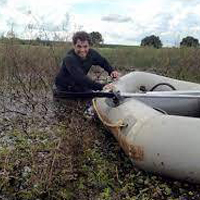
Research Interests:
I completed a Bachelor’s in Biological Science from Universidade Guarulhos, Brazil in 2006 and received a Master’s degree in Geoenvironmental Analysis in 2009. As part of my master’s degree research I visited the PaleoLab for three months (from January to April 2008). After graduating, I moved to Florida and started the doctoral program at Florida Institute of Technology in 2010.
My Ph.D. research looked at the causes and consequences of the Pleistocene megafaunal population collapse in the central Andes (Lake Huinaymarca and Lake Llaviucu) and Southeastern Brazil (Lake Olhos D’Água, Lake Mares, and Lake Branca). I was specifically interested in determining if the megafauna populations collapsed prior to, or was coincident with human arrival, and whether megafaunal density was related to the rise of novel plant communities and altered fire regimes.
Publications:
Åkesson, C., M., C. N. H. McMichael, M. F. Raczka, S. N. Huisman, M. Palmeira, J. Vogel, D. Neill, J. Veizaj, and M. B. Bush. 2021. Long-term ecological legacies in western Amazonia. Journal of Ecology 1:432-446.
Benito, X., M. Luethje, T. Schneider, S. C. Fritz, P. A. Baker, E. J. Pedersen, P. Gaüzère, M. de Novaes Nascimento, M. Bush, and A. Ruhi. 2021. Ecological resilience in tropical Andean lakes: A paleolimnological perspective. Limnology and Oceanography.
Benito, X., M. Luethje, T. Schneider, S. C. Fritz, P. A. Baker, E. J. Pedersen, P. Gaüzère, M. de Novaes Nascimento, M. Bush, and A. Ruhi. 2022. Ecological resilience in tropical Andean lakes: A paleolimnological perspective. Limnology and Oceanography 67:S23-S37.
Blaus, A., M. B. Bush, M. Raczka, M. Nascimento, and C. N. H. McMichael. In Press. Amazonian pollen assemblages reflect biogeographic gradients and forest cover. Journal of Biogeography.
Bush, M. B., M. N. Nascimento, C. M. Åkesson, G. M. Cárdenes-Sandí, S. Y. Maezumi, H. Behling, A. Correa-Metrio, W. Church, S. N. Huisman, T. Kelly, F. E. Mayle, and C. N. H. McMichael. 2021. Widespread reforestation before European influence on Amazonia. Science 372:484-487.
Bush, M. B., A. Rozas-Davila, M. Raczka, M. Nascimento, B. Valencia, R. K. Sales, C. N. H. McMichael, and W. D. Gosling. 2022. A paleoecological perspective on the transformation of the tropical Andes by early human activity. Philosophical Transactions of the Royal Society of London. B, Biological Sciences 377::20200497.
de Oliveira, P. E., M. Raczka, J. L. D. Pinaya, C. N. H. McMichael, and M. B. Bush. 2020. Climate change and biogeographic connectivity across the Brazilian cerrado. Journal of Biogeography 47:396-407.
Gosling, W. D., M. N. Nascimento, S. Y. Maezumi, M. B. Bush, and C. N. H. McMichael. 2021. Scarce fire activity in north and north-western Amazonian forests during the last 10,000 years. Plant Ecology & Diversity https://doi.org/10.1080/17550874.2021.2008040.
Huisman, S. N., M. Raczka, and C. N. McMichael. 2018. Palm phytoliths of mid-elevation Andean forests. Frontiers in Ecology and Evolution 6:193.
Nascimento, M. d. N., M. Bush, and D. d. C. Bicudo. 2021a. Water quality and spatial and seasonal dynamics in the largest water supply reservoir in Brazil and implications for diatom assemblages. Acta Limnologica Brasiliensia 33.
Nascimento, M. N., B. M. Heijink, M. B. Bush, W. D. Gosling, and C. N. McMichael. 2022. Early to mid-Holocene human activity exerted gradual influences on Amazonian forest vegetation. Philosophical Transactions of the Royal Society B 377:20200498.
Nascimento, M. N., N. A. S. Mosblech, M. F. Raczka, S. Baskin, K. E. Manrique, J. Wilger, L. Giosan, X. Benito, and M. B. Bush. 2020. The adoption of agropastoralism and increased ENSO frequency in the Andes. Quaternary Science Reviews 243:doi.org/10.1016/j.quascirev.2020.106471.
Nascimento, M. N., G. Peters-Schulze, G. S. Martins, R. C. Cordeiro, B. Turcq, L. S. Moreira, and M. B. Bush. 2021b. Limnological response to climatic changes in western Amazonia over the last millennium. Frontiers of Biogeography.
Raczka, M. F. 2017. Timing and consequences of Pleistocene megafaunal population collapse in South America. Florida Institute of Technology, Melbourne, Fl.
Raczka, M. F., M. B. Bush, A. M. Folcik, and C. H. McMichael. 2016. Sporormiella as a tool for detecting the presence of large herbivores in the Neotropics. Biota Neotropica 16.
Raczka, M. F., P. D. De Oliveira, and M. B. Bush. 2018. The collapse of megafaunal populations in southeastern Brazil. Quaternary Research 89:103-118.
Raczka, M. F., N. A. Mosblech, L. Giosan, A. M. Folcik, B. G. Valencia, M. Kingston, S. Baskin, and M. B. Bush. 2019. A human role in Andean megafaunal extinction? Quaternary Science Reviews 205:154-165.
Meyer, K. E. B; Cassino, R. F; Lorente, F. L; Raczka, Marco; Parizzi, M. G. Paleoclima e paleoambiente do cerrado durante o Quaternário com base em analyses palinológicas. In: Carvalho, I. S; Garcia, M.J; Lana, C. C; Strohschoen Jr., O. (Org.). Paleontologia: Cenários de Vida - Paleoclimas. 1ed.: Interciência, 2014, v. 5, p. 391-408.
Bush, M; Oliveira, P. E; Raczka, Marco ; Gosling, W. D; Mayle, F. E; McMichael, C. H; Urrego, D. H. Paleoclimates of Amazonia: An Ice-Age view. In: Carvalho, I. S; Garcia, M.J; Lana, C. C; Strohschoen Jr., O.. (Org.). Paleontologia: Cenários de Vida - Paleoclimas. 1ed.: Interciência, 2014, v. 5, p. 341-356.
Bush, M; McMichael, C. H; Raczka, Marco; Toledo, M. B; Power, M. J; Mayle, F. E; Oliveira, P. E. The Holocene of the Amazon. In: Carvalho, I. S; Garcia, M.J; Lana, C. C; Strohschoen Jr., O.. (Org.). Paleontologia: Cenários de Vida - Paleoclimas. 1ed.: Interciência, 2014, v. 5, p. 357-372.
Crystal H. McMichael; Mark B. Bush; Miles R. Silman; Dolores R. Piperno; Marco F. Raczka; Luiz C. Lobato; Monica Zimmerman; Stephen Hagen; Michael Palace. Historical fire and bamboo dynamics in western Amazonia. Journal of Biogeography, v. 40, p. 299-309, 2013.
Raczka, M. F; De Oliveira, P. E; Bush, M; McMichael, C. Two paleoecological histories spanning the period of human settlement in southeastern Brazil. Journal of Quaternary Science, v. 28, p. 144-151, 2013.
C.H. McMichael; D.R. Piperno; M.B. Bush; M.R. Silman; A.R. Zimmerman; M.F. Raczka; L.C. Lobato. Sparse pre-Columbian human habitation in Western Amazonia. Science, v. 336, p. 1429-1431, 2012.
Piasentin, A. M; Semensatto, D; Saad, A.R; Monteiro Junior, A. J; Raczka, M. F. Índice de Qualidade da Água (IQA) do Reservatório Tanque Grande, Guarulhos (SP): análise sazonal e efeitos do uso e ocupação do solo. Geociências, v. 28, p. 305-317, 2009.
Dr. Rachel Sales
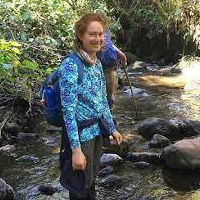
I received my Bachelors in Environmental Biology with minors in Geology and Music from the University of Dayton in 2015. During this time, I completed a project involving the biodiversity of a fossil species, called chitinozoans, during times of climate change in the fossil record. I then entered the graduate program at the Florida Institute of Technology, where I completed my Master’s in Ecology in 2017. For my Master’s thesis, I collected and identified pollen, charcoal, and testate amoebae from two peat bogs in Michigan, to study past climate change and human influence in the region. I am currently a Ph. D student, working in Andean/Amazonian ecosystems.
Research Interests:
For my Ph. D, I studied the mid-late Holoecene ecosystems of the mid elevation region of the Andes. While archeologists have often found sites in the mid elevation range of the Andes (i.e. Machu Pichu, Písac, and Kuelap), it has long been viewed as a conduit for past humans, rather than an area of permanent settlement. However, as new archeological sites are discovered, further research into the ecological history of this region is warranted. For my Ph. D, I used two study sites, both of which were located near archeological sites, to study the effects of past humans on the mid elevation range of the Andes on the surrounding montane forest during the mid-late Holocene (c. 7000 cal yr BP-present).
Publications:
Bush, M. B., A. Rozas-Davila, M. Raczka, M. Nascimento, B. Valencia, R. K. Sales, C. N. H. McMichael, and W. D. Gosling. 2022. A paleoecological perspective on the transformation of the tropical Andes by early human activity. Philosophical Transactions of the Royal Society of London. B, Biological Sciences 377::20200497.
Sales, R. K., C. N. McMichael, S. G. Flantua, K. Hagemans, J. R. Zondervan, C. González-Arango, W. B. Church, and M. B. Bush. 2022. Potential distributions of pre-Columbian people in Tropical Andean landscapes. Philosophical Transactions of the Royal Society B 377:20200502.


 Give to Florida Tech
Give to Florida Tech 